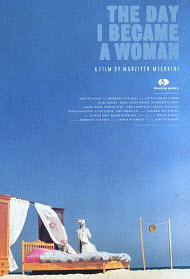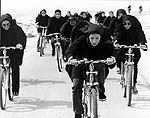The Day I Became a Woman
| Moral Rating: | not reviewed |
| Moviemaking Quality: |
|
| Primary Audience: | Teens Adults |
| Genre: | Foreign Drama |
| Length: | 1 hr. 18 min. |
| Year of Release: | 2000 |
| USA Release: |
October 6, 2001 |
| Featuring | Fatemeh Cheragh Akhtar, Shahr Banou Sisizadeh, Hassan Nabehan, Ameneh Passand, Shabnam Toloui |
| Director |
Marzieh Meshkini |
| Producer | Makhmalbaf Productions |
| Distributor | Olive Films, The Shooting Gallery |
Here’s what the distributor says about their film: “The film tells three different stories about women struggling for identity in Iran. Hava is a young girl who, on her ninth birthday, is told by her mother and grandmother that she has become a woman. She may no longer play with her best friend, a boy, and must wear a chador when outside the home. Deciding that Hava was born in the middle of the day, her mother decides to let her postpone her fate until noon. Hava plays with her friend, waiting for the shadow to disappear from a stick pushed upright into the ground.
Ahoo is a married woman who is taking part in a cycling race. Ahead of the rest, Ahoo is pursued by her husband on horseback. He tries to persuade her to stop cycling and come home, and then threatens her with divorce. When Ahoo defiantly continues cycling, her husband brings a mullah who divorces them. Later, tribal superiors and male family members come to stop Ahoo as she tries to escape the social constraints of being a woman.
Hoora is an elderly widow who has recently inherited a great deal of money. She decides to buy all of the material possessions she has ever wanted, but could not have while she was married. She ties strings to her fingers to remind her what to buy, and hires several young boys to help her. They take her and her new belongings to the beach. As she floats out to a waiting ship, seemingly free from the bonds of womanhood, she is watched by two of the young women from the bicycle race, and Hava, now wearing her chador.”


PLEASE share your observations and insights to be posted here.


